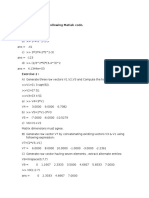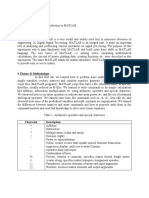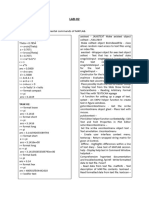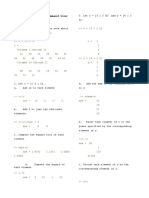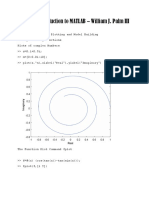0% found this document useful (0 votes)
49 views34 pagesMatlab File
The document discusses modelling and simulation using MATLAB. It provides examples of basic MATLAB operations like creating matrices, performing arithmetic operations on matrices, transposing matrices, and using logical indexing. It also demonstrates the use of loops, conditional statements, matrix functions and various output formats in MATLAB.
Uploaded by
neerajkumhar2005Copyright
© © All Rights Reserved
We take content rights seriously. If you suspect this is your content, claim it here.
Available Formats
Download as PDF, TXT or read online on Scribd
0% found this document useful (0 votes)
49 views34 pagesMatlab File
The document discusses modelling and simulation using MATLAB. It provides examples of basic MATLAB operations like creating matrices, performing arithmetic operations on matrices, transposing matrices, and using logical indexing. It also demonstrates the use of loops, conditional statements, matrix functions and various output formats in MATLAB.
Uploaded by
neerajkumhar2005Copyright
© © All Rights Reserved
We take content rights seriously. If you suspect this is your content, claim it here.
Available Formats
Download as PDF, TXT or read online on Scribd
/ 34


